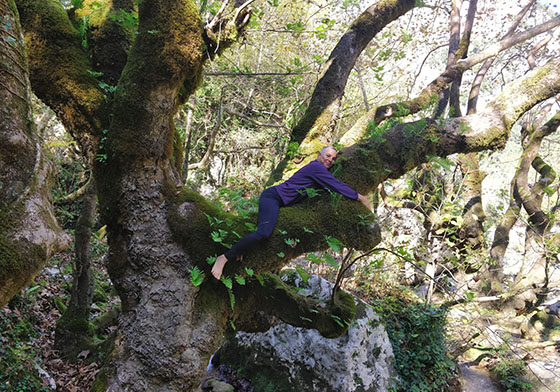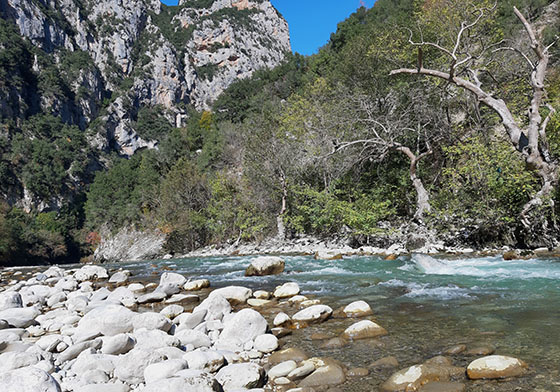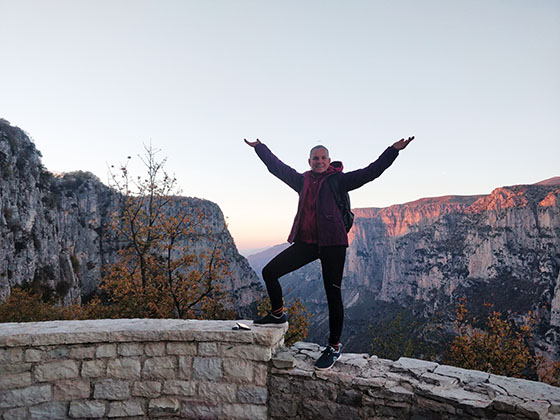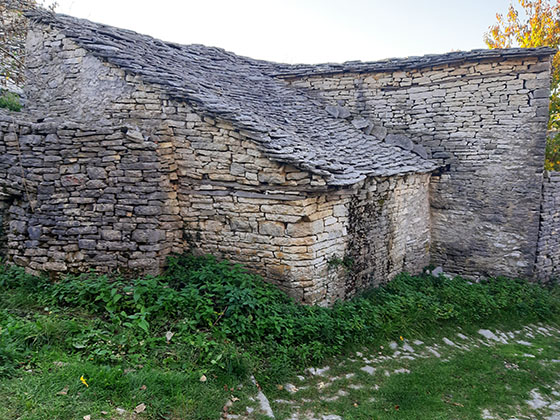In November 2020, after eight months of the prolonged solitary lifestyle that coronavirus imposed on me and the rest of the world, I needed a break. Greece was the only “green” country we were allowed to fly to, so together with my friend Hadas, we conceived a ten-day road trip to mainland Greece, “Thelma and Louise” style, only without the bad ending. Beach season was over, so we aimed for the mainland. Beyond this, we did not have a set itinerary or any reservations. We decided to play it by ear.
The coronavirus pandemic deprived us of many of the attractions tourists usually visit, like restaurants, museums, and other public places (many hotels were closed too), but we were content to roam empty roads and experience most of the destinations without tourists in sight.
It was a marvelous trip that filled us with awe for this beautiful country of endless seashores, houses built right on the waterfront, magnificent pristine gorges with turquoise rivers, and out-of-this-world rock formations. We loved the old limestone villages on mountain slopes, always with a church, an old plane tree on a stone pedestal, and a public fountain in the “agora” (village square).
We were amused by the herds of cats who patrol the alleys and were impressed by the calm, massive, and furry Greek Shepherd dogs who guided sheep across the roads without the supervision of a human in sight.
Here is our route in Google Maps and a day-by-day recount of the beauty we saw.
Day 1
We had landed late the previous day, hired a car at the airport, and stayed at an Airbnb unit nearby, so early in the morning we were on our way. The first destination: Delphi, the place of the oracle.
The museum at Delphi was closed, but we had the ancient ruins of Tholos of Delphi, a circular temple that was considered to be the navel of the world, all to ourselves. We took our time walking the ruins, breathing in this spiritual and magical place.
After that, we headed on a beautiful winding road north. Occasionally we saw a herd of sheep crossing the road or a lone rabbit hunter walking along. Sunset caught us at Lidoriki, an authentic village spread on the slopes of Mount Giona, overlooking the Mornos artificial reservoir.
Google Maps did not show any listing of accommodations in the village, so we reverted to the first and best navigation technique—asking directions from old villagers we found sitting on their porches.
This is how we found the enchanting Kallipolis Hotel, and the “taverna” near the agora where we had a delicious peasant chicken dish for dinner.
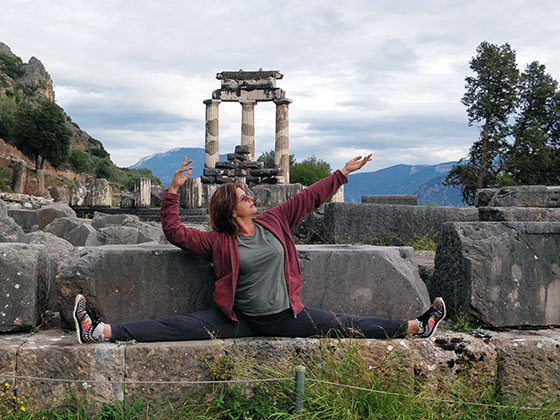
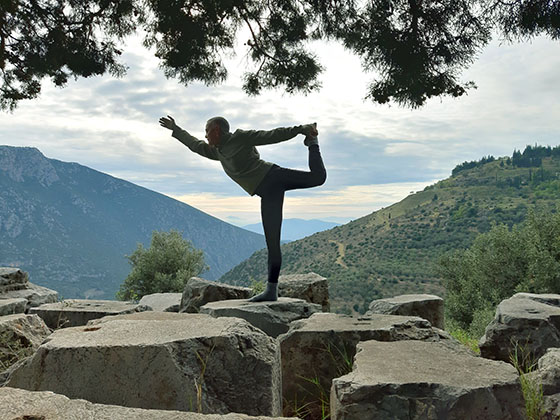
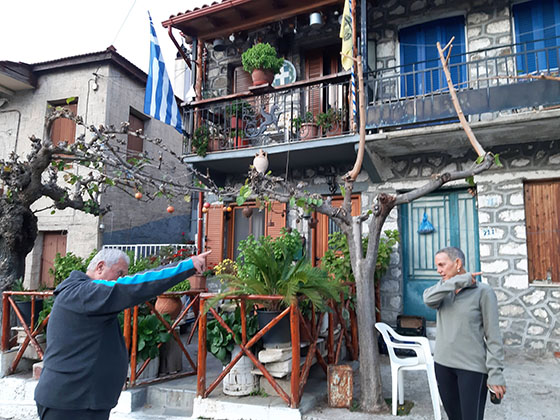
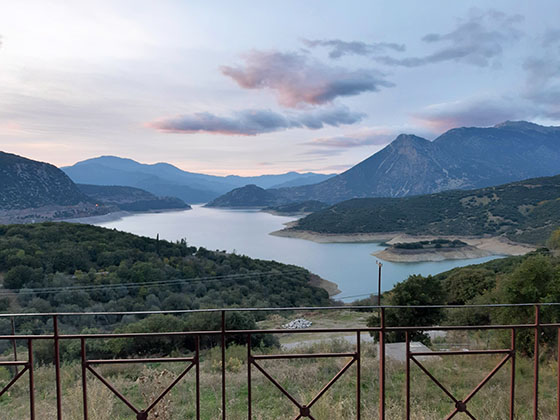
Day 2
Early in the morning, the clouds covered Mornos reservoir like a cotton blanket, and the view was magnificent. We drove south to get on the main road to the north and stumbled upon Bathis beach.
It was warm. A small fishing boat with a fisherwoman paddled along the beach, casting her net occasionally. We took a swim and had a picnic of fresh bread and cheeses we got earlier from the supermarket, and then continued north to the Epirus region.
The road gradually went up the mountains, opening to magnificent vistas, small villages with stone houses, fields of corn, groves of grapes, and—of course—endless plantations of olive trees.
We crossed the mountains and arrived at Lake Trikonida, a quite big freshwater lake with such still water it perfectly mirrored the clouds in the sky. Choosing one of the open-air restaurants on the lakefront, in the shade of old plane trees, we enjoyed “small fish from the lake,” as the owner described in broken English, and homegrown Greek olives and bread.
At sunset we reached Menidi, a small town on the shores of the Ambracian gulf, and wandered along the seashore promenade, asking about rooms for the night. We found a simple but clean hotel right on the water.
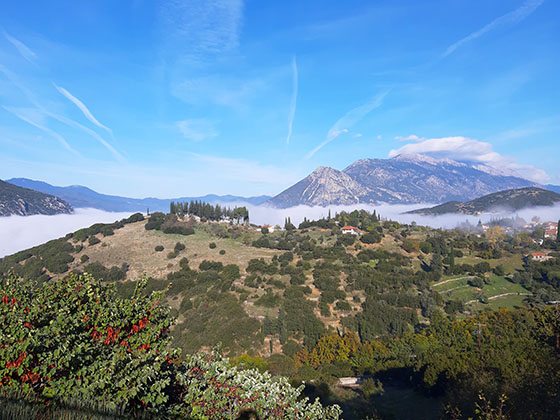
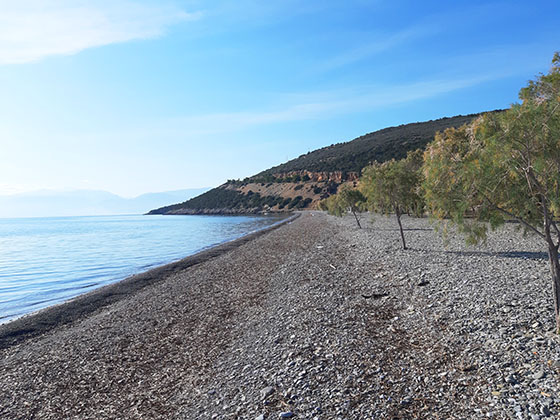
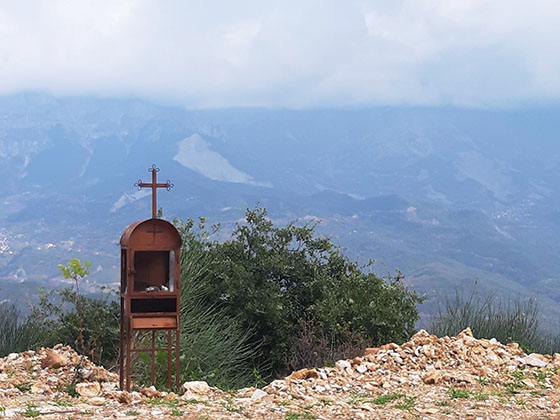
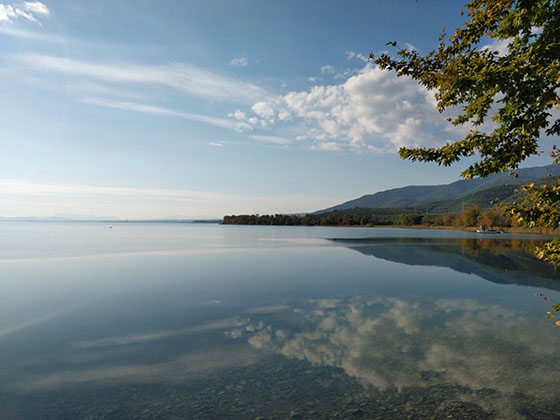
Day 3
We got up early, got coffee and sandwiches from a Greek Starbucks-like coffee place on the road, and continued north to Pramanta, in the mountainous Tzoumerka region.
The distance we planned to cover was not far, but the narrow windy roads slowed the drive considerably. Still, we found the roads in Greece to be in excellent condition.
A friend sent us directions over Google Maps for an easy hike in the Pramanta refuge, up to the Kefalovriso waterfall.
Though it was not easy to find the starting point because the last part was on an unpaved road, the trail itself was easy and pleasant. The trail began in a flat stretch in the forest, with many colorful mushrooms hidden under the foliage. Then came a bit more difficult part up the mountain, climbing on small boulders to the waterfall.
Since it was getting late already, we went back to the village Pramanta to look for directions to an open hotel. It didn’t take long before we stumbled onto an elderly lady whom we had seen on the way driving in, sitting and smoking a cigarette on her balcony overlooking the narrow road. We remembered her because she had a mane of blonde hair and we were discussing whether it was a wig—do blonde Greeks exist? The lady did not speak English, so she waved to her neighbor, who tried to explain the location of the hotel to us with hand motions. When they saw we didn’t understand, the neighbor jumped in his old truck and drove ahead of us for a few kilometers out of the village, showing us the route to Chalet Kalivas.
The chalet compound was beautiful, two chalets and a sauna hidden in the forest, built completely by the owner himself, with attention to every detail of furniture.
In the evening we drove to Agnanta, where we were recommended the Taverna Tzoumerka, and we did not regret it. The tzatziki, stuffed grape leaves, Greek salad, cooked feta with vegetables, and rabbit stew were delicious.
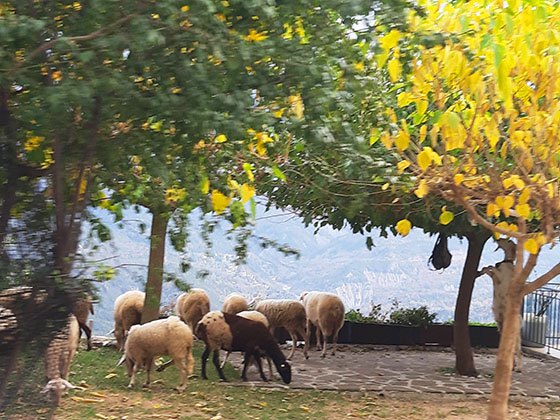
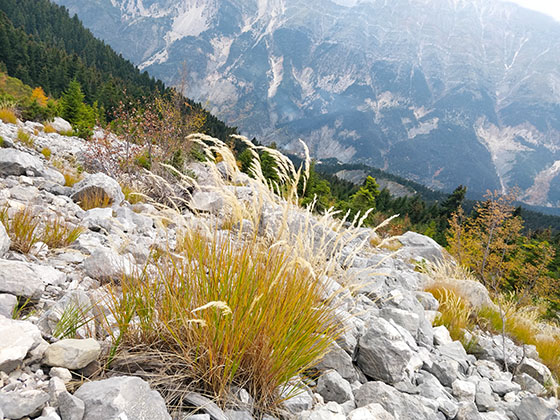
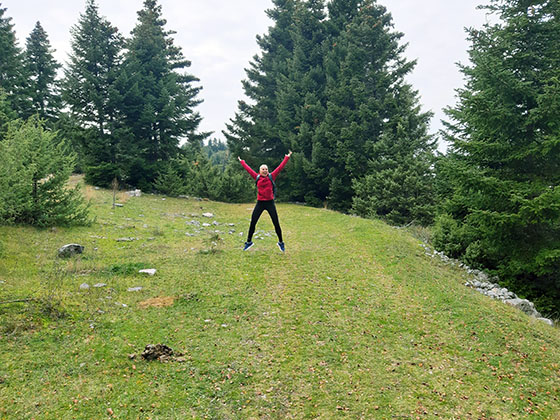
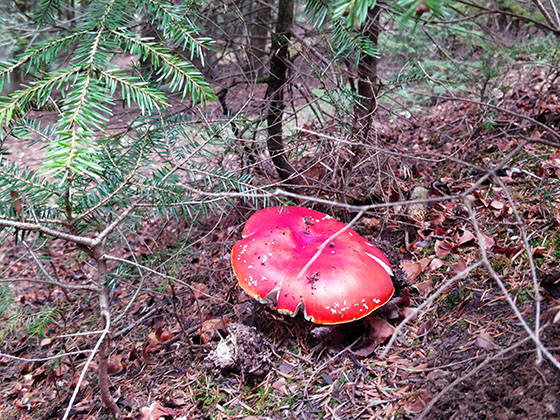
Day 4
A short drive took us to Kalenzi, where we found an open supermarket and got supplies for our picnic in the Klifkis waterfall.
The trail began in Kalenzi. We parked the car somewhere along the dirt road and started the steep walk down. The trail, wide and not dangerous, was defined in the guide as a “hike for families,” but the way down—and then up—was not easy.
As with other places, we had the park to ourselves. The only sound was the gentle ding-dong of the bells on some herd, echoing over the mountains. The only encounter we had was with a goat, which came to eat bread from our hand.
The longest part of the trail was the descent. Once we reached the bottom of the gorge, the trail transformed to a path inside the thick flora that surrounds the waterfalls and the turquoise streams.
Next, we headed north to Zagoria. Past an hour’s drive, we stopped in Ionina, a beautiful lakeside city with an old quarter surrounded by thick walls, where we got coffee and souvlaki.
It was late afternoon when we headed to the mountains, climbing the windy roads to Vikos Gorge, a UNESCO world heritage site. We saw sunset at Oxya Viewpoint (reviews on TripAdvisor), did a quick tour in the Stone Forest, and headed to Monodendri to look for a place for the night.
From an update on the internet, we learned that Greece had entered a three-week lockdown at noon that day. Sure enough, the traditional stone houses of Monodedri, with slate roofs and wooden shutters, were all locked and dark. I saw a light at the famous Kikitsas Pie restaurant—and went inside to ask. The lady guided me to the Vikos Hotel, where we were the only guests. It was lovely.
